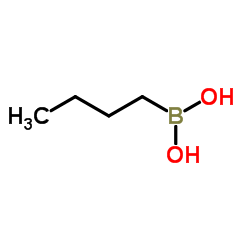The use of low-energy collisionally activated dissociation negative-ion tandem mass spectrometry for the characterization of dog and human urinary metabolites of the drug BW 1370U87.
L C Taylor, R L Johnson, L St John-Williams, T Johnson, S Y Chang
Index: Rapid Commun. Mass Spectrom. 8(3) , 265-73, (1994)
Full Text: HTML
Abstract
Liquid chromatography (LC) combined with atmospheric pressure chemical ionization mass spectrometry was used to identify phase I and II metabolites of the drug BW 1370U87 in dog and human urine. Additional analysis of individual high-performance liquid chromatograph fractions collected from dog urine by combined gas chromatography/mass spectrometry identified one metabolite which was not detected by LC/MS methods. Using negative-ion LC/MS, the majority of BW 1370U87 metabolites in human urine were identified as glucuronic acid conjugates of phase I oxidative metabolites. The negative-ion fragmentation produced by low-energy collisionally activated decomposition (CAD), studied by tandem mass spectrometry experiments, confirmed that these compounds were drug-related and allowed metabolite structures to be assigned. Product-ion spectra of the metabolites were dominated by the loss of neutral molecules from even-electron deprotonated [M-H]- ions.
Related Compounds
| Structure | Name/CAS No. | Molecular Formula | Articles |
|---|---|---|---|
 |
1-Butaneboronic acid
CAS:4426-47-5 |
C4H11BO2 |
|
Inhibitors of bacterialN-succinyl-l,l-diaminopimelic acid de...
2009-01-01 [Bioorg. Med. Chem. Lett. 19 , 6350-2, (2009)] |
|
n-Alkylboronic acid inhibitors reveal determinants of ligand...
2014-10-28 [Biochemistry 53(42) , 6679-86, (2014)] |
|
Measurement of myo-inositol in diabetic sera by GC/MS/SIM us...
1988-08-31 [Clin. Chim. Acta 176(2) , 207-12, (1988)] |
|
A transition-state-analog inhibitor influences zinc-binding ...
1985-08-15 [Biochem. Biophys. Res. Commun. 130(3) , 1154-60, (1985)] |
|
15 beta-hydroxysteroids (Part III). Steroids of the human pe...
1996-01-01 [Steroids 61(1) , 11-7, (1996)] |